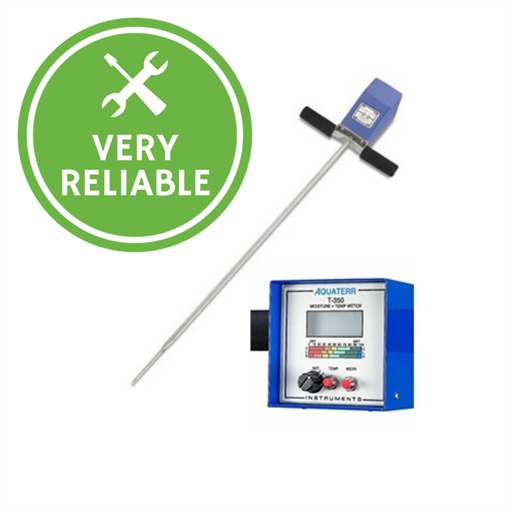Soil moisture is an essential factor affecting the growth and development of healthy plants. Soil moisture sensors come in all shapes and sizes, each with different specifications and suited to particular applications. The variety of choices can make the selection of the best sensor for your needs a tricky process.
Instrument Choice Scientists to the rescue! Here is our guided tour of the main types of volumetric soil moisture sensors, and an insight into how they work.
How to Categorise Soil Moisture Sensors
Soil sensors are indispensable instruments when you need to optimise your irrigation, grow better-yielding crops and, ultimately, increase your profit. Soil Moisture Sensors fall into two major groups:
- Water Potential Sensors (E.g., Tensiometers); and
- Volumetric Sensors.
Volumetric Sensors measure the volumetric water content of the soil. Expressed simply, this is the ratio of water volume to soil volume, expressed as a percentage.
There are three types of Volumetric Soil Moisture Sensors:
- Capacitance or Frequency Domain Refractometry (FDR) sensors
- Time Domain Refractometry (TDR) sensor; and
- Time Domain Transmissiometry (TDT) sensors.
Understanding the Different Types of Volumetric Soil Moisture Sensors
 1. Capacitance or Frequency Domain Refractometry (FDR) Sensors
1. Capacitance or Frequency Domain Refractometry (FDR) Sensors
Capacitance refers to the measurement of the change in frequency of a reflected radio wave or resonance frequency. A Frequency Domain Refractometry (FDR) Soil Sensor determines soil moisture using this principle. These devices create an electromagnetic signal, then measure the difference between the output wave, and the returning wave frequency.
Aquaterr Soil Moisture Meter
Product Code: IC-T-350
The Aquaterr IC-T-350 is a real-world example of an FDR Sensor.
It's common to find the Aquaterr IC-T-300 series of portable soil measurement instruments in rugged agricultural and industrial environments. The incredibly strong 76cm stainless steel probe houses sensors that measure both soil moisture and temperature.
2. Time Domain Refractometry (TDR) Sensors
Similar to FDR sensors, Time Domain Refractometry (TDR) Sensors apply voltage to parallel rods that generate pulses that then return to the instrument's sensor for analysis. The speed of the energy along the rod is related to the permittivity of the substrate. Significantly, in wet soil, the pulse will be slower than in a dry medium.
TDR Digital Soil Moisture Sensor Reader
Product Code: IC-RD1200
The IC-RD1200 Soil Moisture Sensor is a prime example of a TDR Sensor.
The IC-RD1200 Soil Moisture Sensor is handheld and portable with an easy-to-use interface. This measuring device performs beautifully for collecting instant soil moisture readings out in the field. The meter can store and export data via a USB interface. You can see the full TDR returned waveform if your application demands the additional information.
3. Time Domain Transmissiometry (TDT) Sensors
Time Domain Transmissionmetry (TDT) Sensors deploy a similar method of measurement to TDR Sensors, but the design solution varies. The rods on TDT sensors are in a looped or closed circuit. As with TDR Sensors, in wet soil, the returning pulse will be slower than in dry material.
Digital TDT SDI-12 Soil Moisture and Conductivity Sensor
Product Code: ACC-SEN-SDI
The ACC-SEN-SDI Soil Moisture Sensor is a prime example of a TDT Sensor.
The ACC-SEN-SDI is the first product to incorporate the accuracy of digitised Time Domain Transmissometry in a low-cost soil moisture sensor. You can collect highly accurate absolute readings of soil moisture under all conditions of temperature and soil chemistry! The expression of Absolute Volumetric Water Content is as a percentage. The device also measures soil temperature, conductivity, and permittivity.
Conclusion
Soil moisture sensors are available for an extensive range of applications for serious home gardeners, professional growers, and farmers. Understanding the different types of Volumetric Soil Sensors will help you understand the practical differences between devices, their capabilities, and what are the most suitable applications.
Should you need more information about soil moisture sensors, particularly what type and model of an instrument will suit your needs, feel free to contact an Instrument Choice Scientist. We're here to help! Call 1300 737 871 or email customer-service@instrumentchoice.com.au
